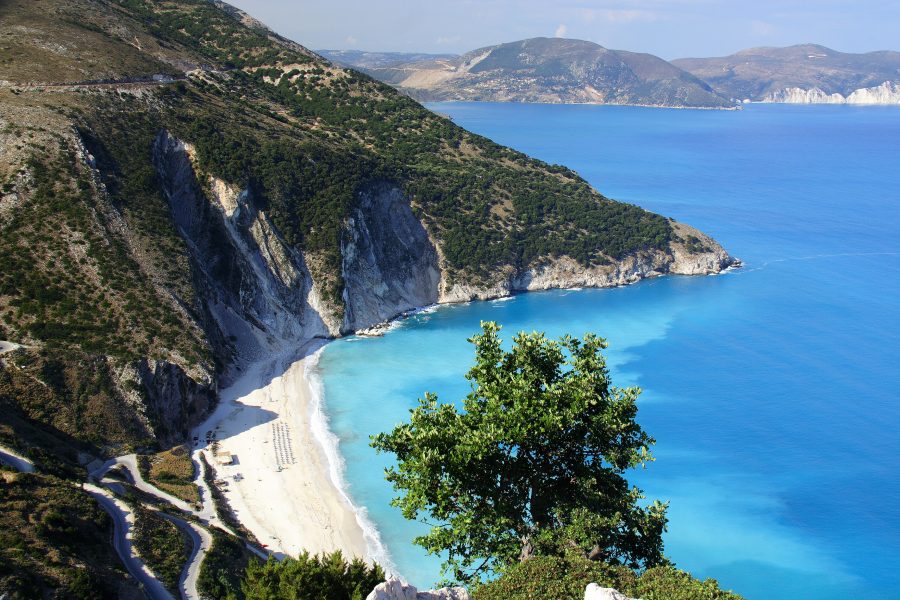Spotting throngs of excited tourists jostling for position at the quayside, we half-expected to see an A-list celebrity pulling up in their million-pound yacht. But the cameras were primed to catch sight of a more important visitor in this part of the world – George, the loggerhead turtle.
Kefalonia, the fourth largest Greek island, is one of the Med’s breeding grounds for this protected species and George, who’s become a local star, regularly follows the fishing boats into shore at Argostoli, the island’s capital, hoping for a few scraps.
Pop down to any harbour when the fishermen are arriving home and you might catch a glimpse of one of his friends. If you do, let’s hope it’s as accommodating as George because it was only after affording everyone time to click away on their cameras that he slipped beneath the warm waters and swam out to sea.
It’s believed turtles can live until a hundred so it’s likely that George experienced the horrific earthquake which struck in 1953, killing 600 people and flattening around 85 per cent of buildings. The island’s northern tip is the only region which escaped unscathed, leaving the quaint fishing village of Fiskardo as the one place you’ll see Venetian-designed buildings from before the quake.
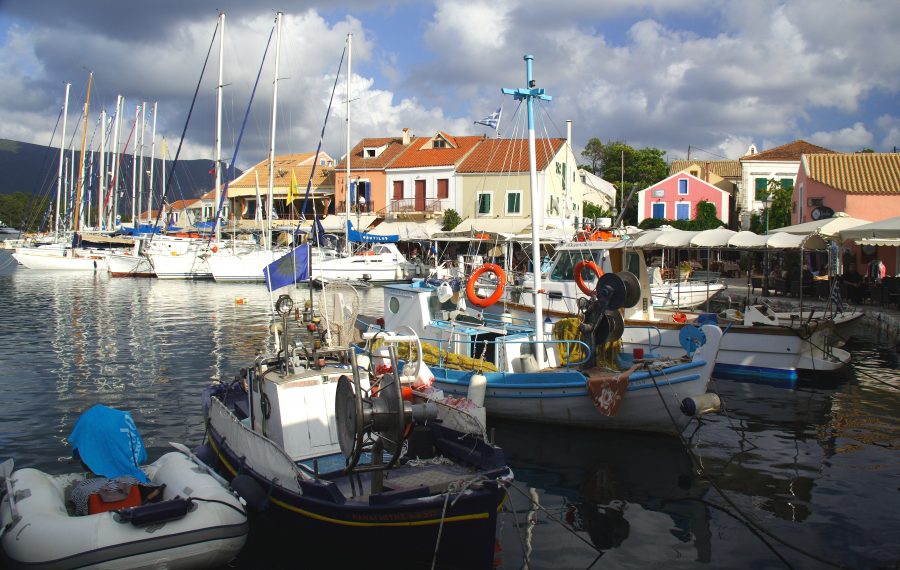
(c) Richard Webber

(c) Richard Webber
So after strolling along Argostoli’s promenade and window-shopping along the main drag, we jumped in our hire car and headed north. Some say driving in Greece is only for the fainthearted but that’s not true in Kefalonia. The roads are relatively quiet and in good condition so hiring a car is the ideal way to explore.
Since Louis de Bernières’ novel Captain Corelli’s Mandolin and the subsequent film thrust Kefalonia into the spotlight, tourist numbers have risen. Thankfully, though, the island has retained an identity and sedateness some Greek islands have, sadly, relinquished in the face of commercialism. Even busier holiday hotspots like Skala in the southeastern corner have avoided over-development.
This sleepy island is blessed with natural beauty in abundance and confidently relies on such charms to satisfy its visitors. And it’s doing a good job because people return time and time again to this tranquil haven, and we could understand why as we admired the scenery while driving north.
Surrounded by mountains and olive groves punctuated with elegant cypress trees, Fiskardo’s charm is epitomised by its compact little harbour, edged by restaurants and shops; it’s a lovely spot for more souvenir-hunting and a bite to eat, although prices are higher than elsewhere on the island. We enjoyed a late afternoon stroll before relaxing with a coffee and cold drinks while watching the plethora of yachts bobbing around in the bay.
Retracing our steps along the coast, we took a three-mile detour down the winding road to Assos, a picturesque village curling around the neck of a peninsula. The rays of golden light warmed our faces as we wandered around narrow streets of bougainvillea-draped houses, little restaurants and locals watching the world go by.
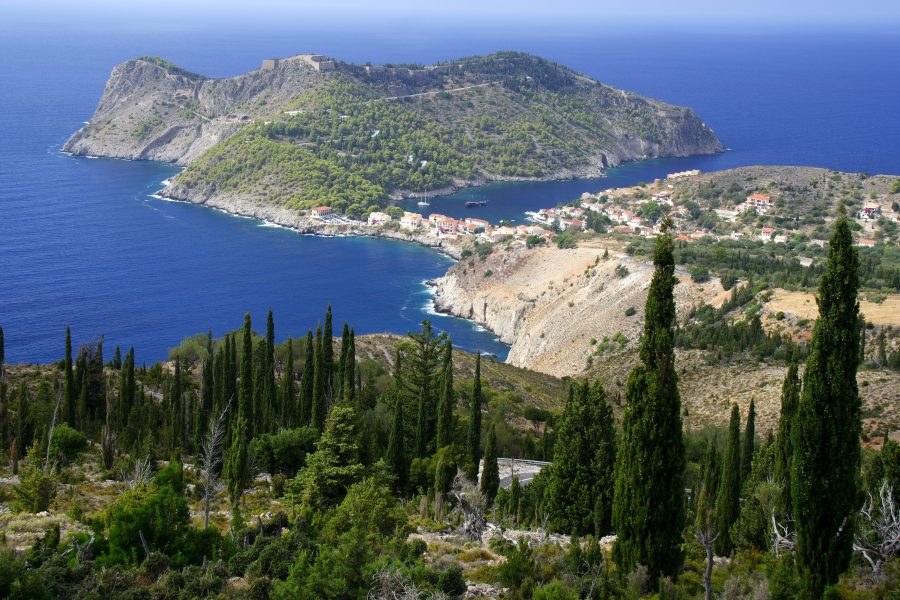
(c) Richard Webber
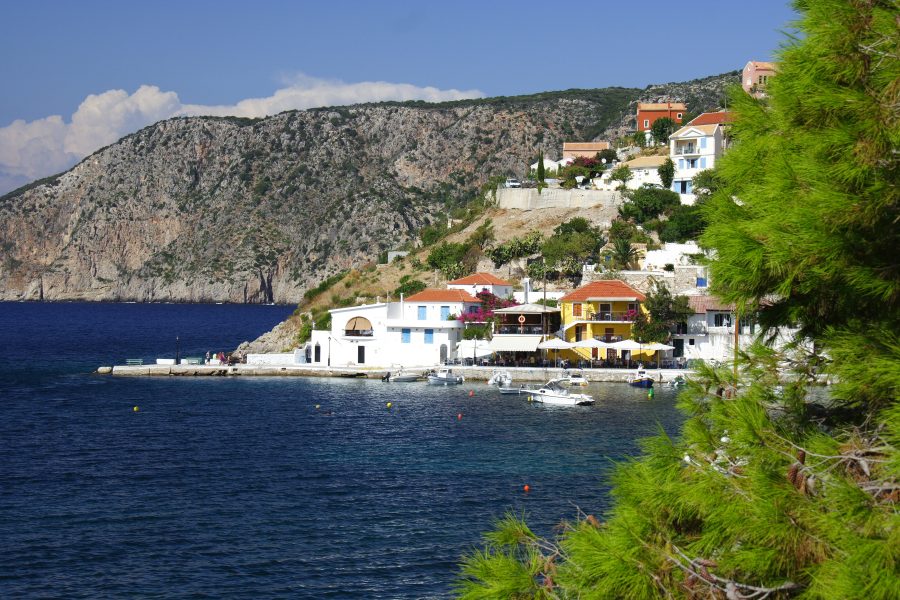
(c) Richard Webber
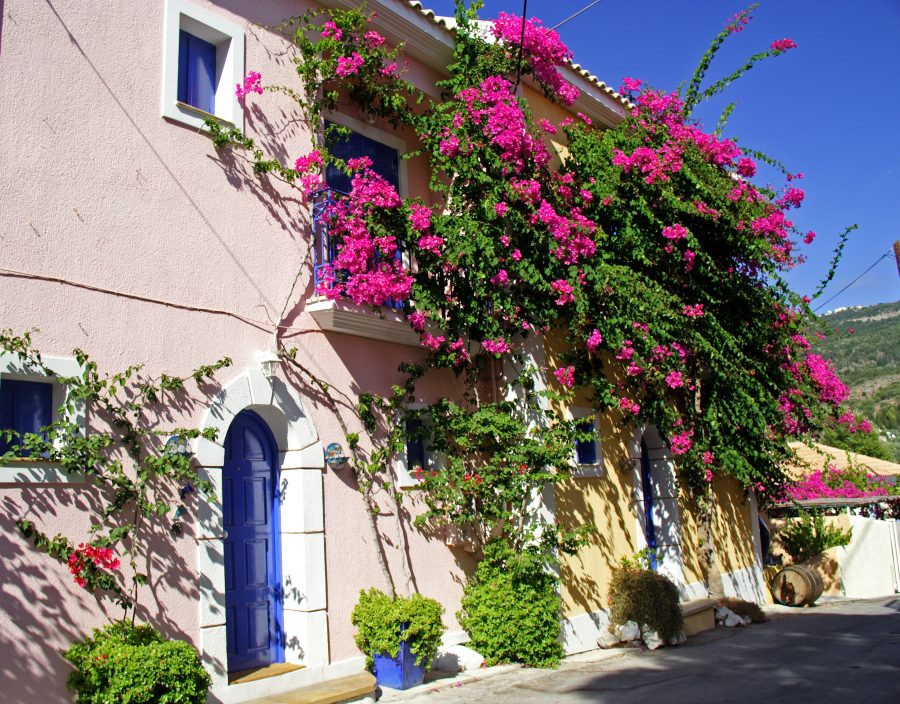
(c) Richard Webber
Next stop was the famous Myrtos Beach, the world’s fifth-most photographed beach. From the vantage point on the main road, high above, the view of this crescent-shaped beach hugging steep cliffs is stunning. The white shingle sand shelves steeply and undercurrents mean care needs to be taken if swimming, but it’s ideal for sunbathing.
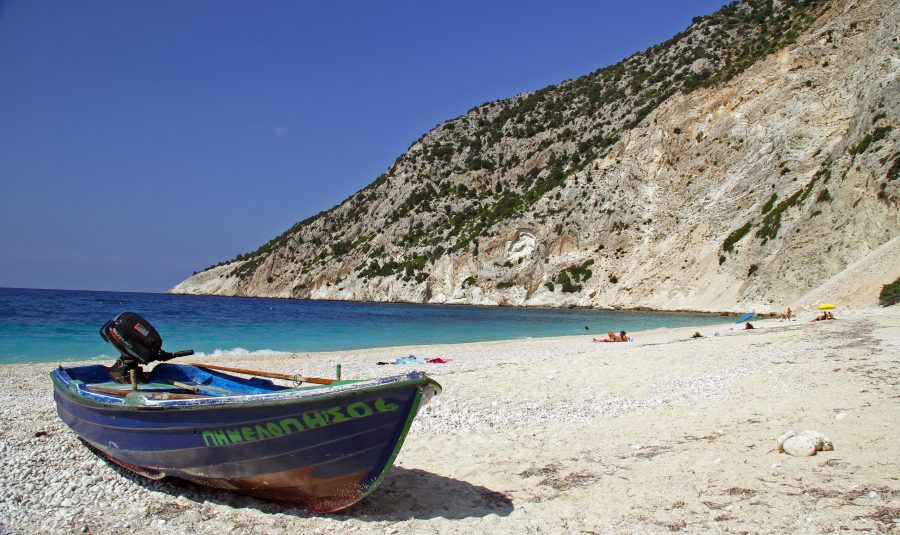
(c) Richard Webber
Blessed by beautiful blue skies throughout the week, most days involved sightseeing, swimming and lazing around on beaches, such as Antisamos, a location used in Captain Corelli’s Mandolin, although sand had to be imported to cover up the white stony beach.
It’s an idyllic spot where the turquoise waters of the Ionian Sea lap a horseshoe-shaped beach set against a backdrop of dense wooded hills. Like most of Kefalonia’s beaches – where burger bars, amusement arcades, blaring music and kiss-me-quick hats are unheard of – it’s unspoilt. We idled away a couple of hours relaxing and listening to the gentle, rhythmic sound of the water before heading down the coast, via a scenic drive through the mountains, to Poros.
Just outside the seaside town of Sami, we detoured to Drogarati Cave. Estimated to be 150 million years old, it was only discovered three centuries ago. Over 100 feet deep, large chambers are illuminated to reveal the splendour of the multicoloured stalactites and stalagmites. We edged along into a second chamber renowned for its outstanding acoustics – so much so it holds around 500 people and has been used for cultural events.
Climbing seemingly endless steps to the open air, we were hit by the heat of the late afternoon sun but once in Poros, a little port where ferries link the island with, among others, Lefkas and the Greek mainland, a cooling sea breeze had picked up.
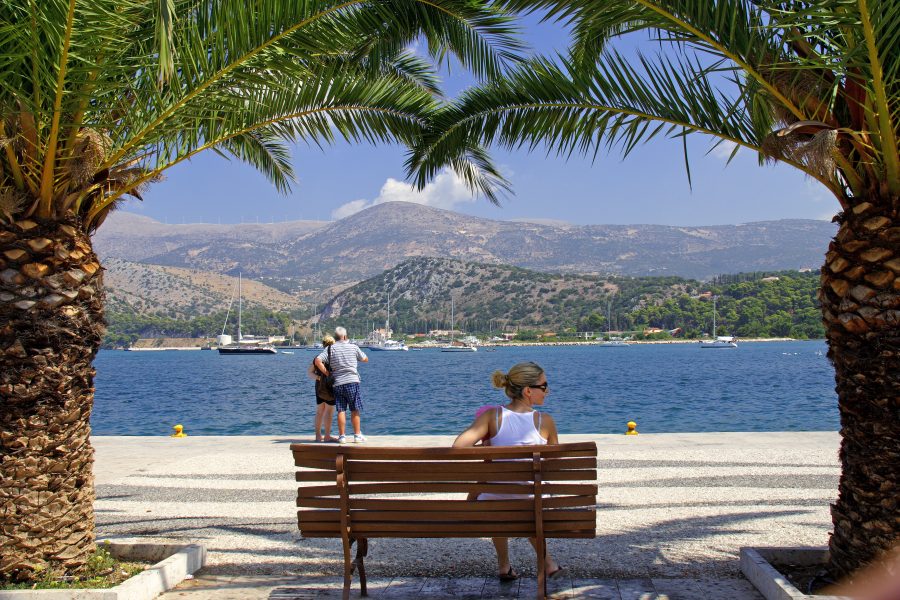
(c) Richard Webber
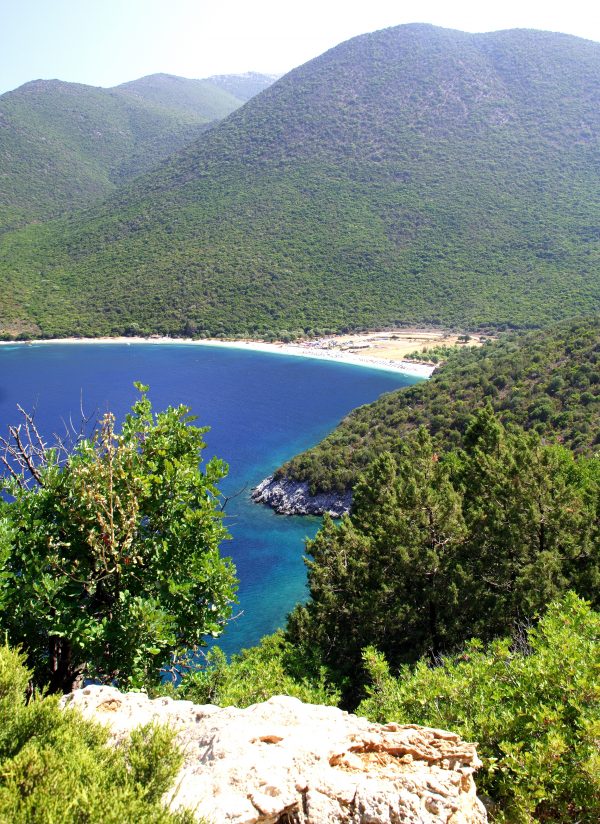
(c) Richard Webber
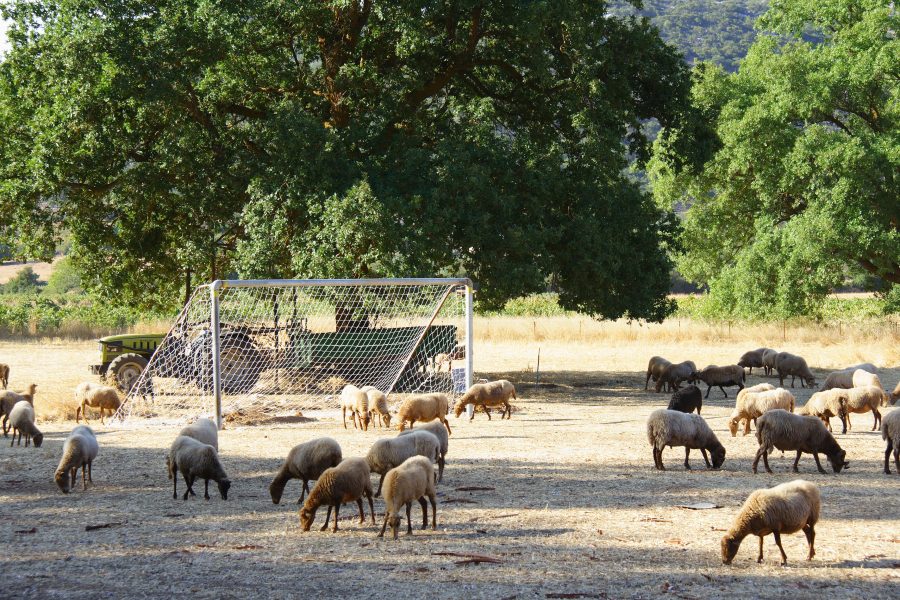
(c) Richard Webber
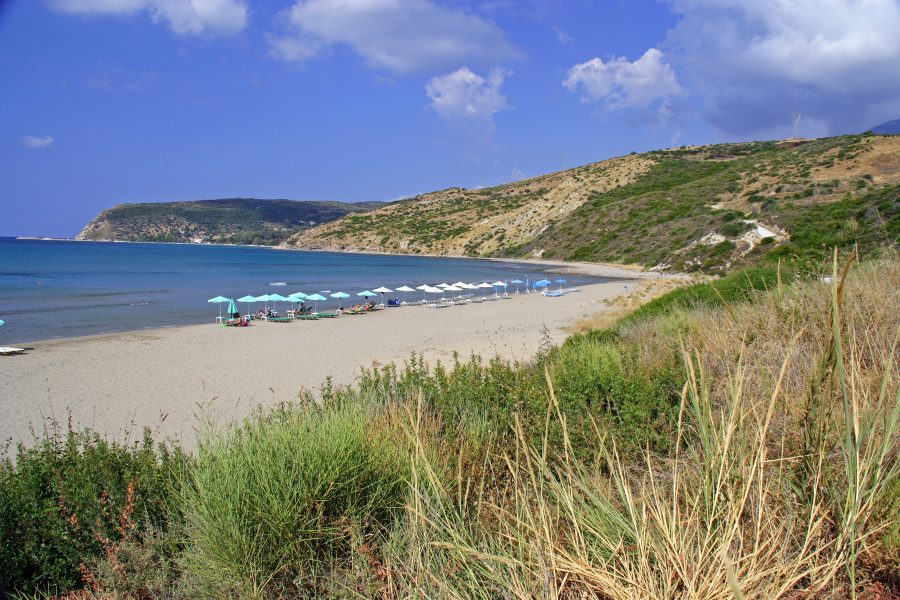
(c) Richard Webber
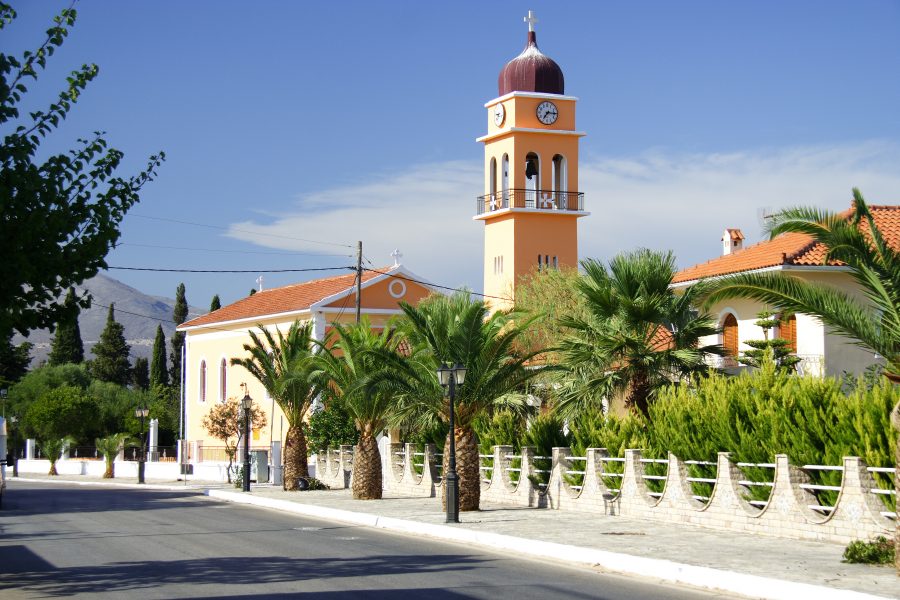
(c) Richard Webber
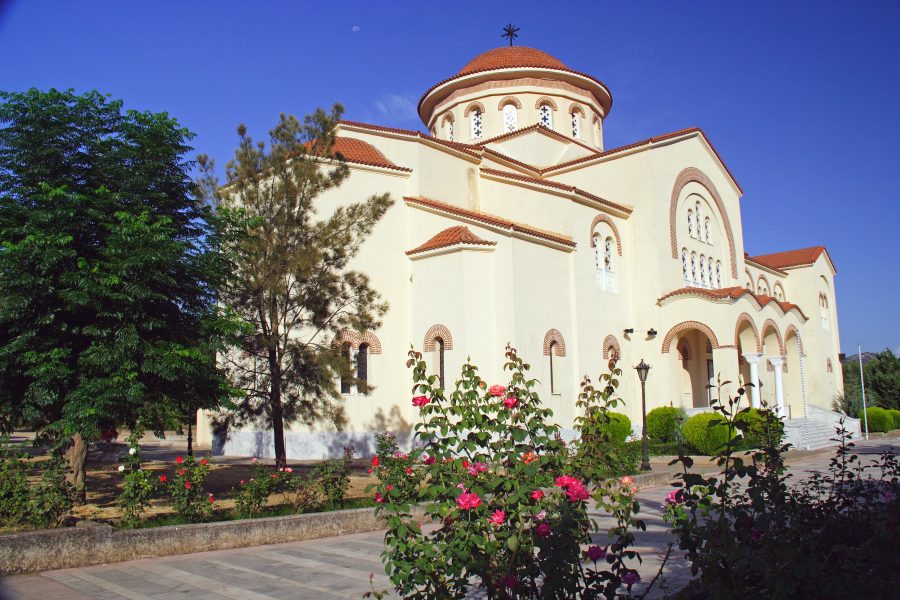
(c) Richard Webber
At a quayside restaurant Paula and I sampled a glass of Robola, Kefalonia wine, which whetted our appetite for next day’s visit to the Robola Cooperative Winery. On the slopes of Mount Ainos, the island’s highest mountain, vineyards grow as high as 2500 feet, producing the grapes used in one of Greece’s most famous white wines.
We joined other tourists for a short guided tour covering the production process before reaching the part most of us were waiting for – the complimentary sampling session. Although security restrictions meant we’d be unable to take any home, we bought a bottle of red to enjoy back at our self-catering apartment in Spartia, a speck of a village in the south-west of the island.
En route to our base for the week, a quiet complex of studios and apartments with well-kept gardens, swimming pool and tennis court to hand, we stopped at Ag Gerassimos Monastery, just down the road from the winery, where the remains of the island’s patron saint are held in a silver casket inside an ornate chapel.
If, like us, you enjoy holidays combining sightseeing with relaxing then Kefalonia is ideal. Small enough to explore without feeling rushed, even on a seven-day break, and a multitude of beaches to choose from, it’s perfect for anyone wanting to experience the natural charms of the Greek Islands, free of commercialism, noise and the hustle and bustle of larger destinations.
By the time we arrived back at our apartment, night was drawing in but before settling down with a glass of local wine, we headed to the nearby beach to see if we could spot one of George’s friends. The last of the fishing boats had reached the shore and in the fading light we scanned the millpond of a sea. Sadly, no loggerhead turtles this evening – perhaps tomorrow.
Must Do…
1. Head for a harbour to meet the fishing boats and you might catch a glimpse of a loggerhead turtle.
2. Hire a 4×4 and bounce up the rubbly track to the top of Mount Ainos, the island’s highest point, and enjoy the views.
3. Visit the northern village of Fiskardo and admire the Venetian buildings and myriad yachts moored in the picturesque harbour.
4. Hop on the ferry for the short crossing to neighbouring island Ithaka, even more relaxed and laid back than Kefalonia.
5. Pack your camera and enjoy the breathtaking views of Myrtos Beach, the fifth most photographed beach in the world, from the main road before driving down to the stony beach itself.
6. Spend an afternoon on Kamina Beach, near Skala, one of the island’s quietest and least crowded beaches.
7. Sample local wines at the Robola Winery before heading to nearby Ag Gerassimos Monastery.
8. Stroll along the promenade at Argostoli, the island’s capital, before picking up your souvenirs in the main shopping street.
9. Relax on Antisamos Beach, a sweep of white pebbles featured in Captain Corelli’s Mandolin.
10. Over 100 steps lead down to Drogarati Cave, near Sami, where the stalactites and stalagmites are illuminated to reveal their true beauty.
More information:
Sunvil Holidays (020 8758 4758, www.sunvil.co.uk).
A night’s stay at an airport hotel is the perfect way to start a relaxing holiday and with Holiday Extras most hotels can include a holiday parking package. To book a family room at the Express by Holiday Inn from £104.95 for one nights’ stay and eight days’ parking, visit www.holidayextras.com or call 0800 1313 777.

